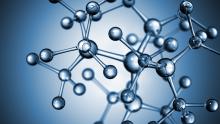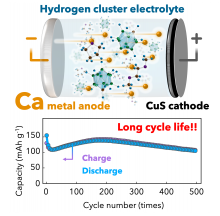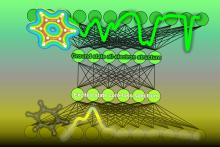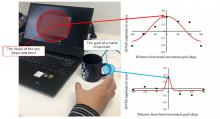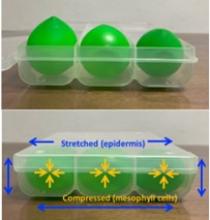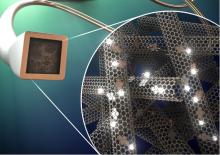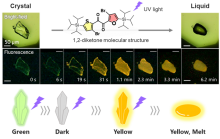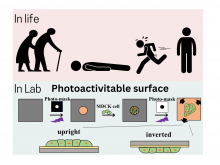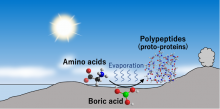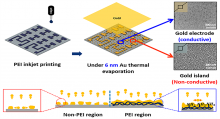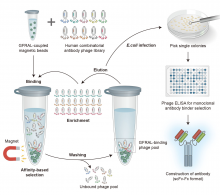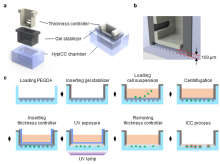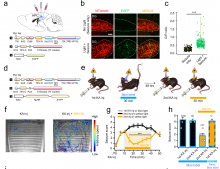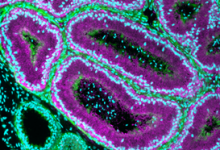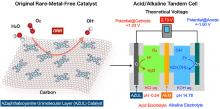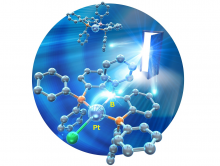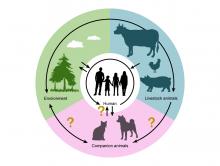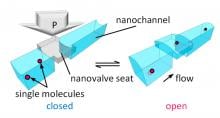Peer Reviewed
News
23 May 2023
Acoustic signals can be effectively used for monitoring glacial runoff and provide a cheaper and more accessible alternative to existing methods.
23 May 2023
With the use of electric vehicles and grid-scale energy storage systems on the rise, the need to explore alternatives to lithium-ion batteries has never been greater. Tohoku University researchers have recently developed a prototype calcium metal rechargeable battery capable of 500 cycles of repeated charge-discharge - the benchmark for practical use. The breakthrough was made thanks to the development of a copper sulfide nanoparticle/carbon composite cathode and a hydride-based electrolyte.
23 May 2023
Researchers from the Institute of Industrial Science, The University of Tokyo, discover how certain colloids can form a solid-like gel and reveal how the mechanism differs from glasses.
19 May 2023
Researchers at the Institute of Industrial Science, The University of Tokyo, use artificial intelligence to help interpret data generated by material science spectroscopy experiments, which can aid in the development of new drugs and organic conductors.
18 May 2023
It’s not unusual for many of us to reach for a cup of coffee or cup of tea whilst focusing our attention on a screen. Scientists have long pondered whether our hand movements influence our spotlight attention. And now a group of researchers from Tohoku University have discovered that our spotlight attention and the attention paid to our moving hands operates via independent mechanisms.
17 May 2023
A research group led by Osaka University has found that plant cells may be able to detect mechanical forces to determine their own position within the leaf—whether they are on the surface or in the inner tissues—and therefore differentiate into appropriate cell types after damage. These findings reveal how plants regenerate the correct type of tissues when damaged, and may improve our understanding of the mechanisms underlying the high regeneration potential of plants.
17 May 2023
To improve the therapeutic techniques to treat those with brain disorders, researchers have developed microscopic, thermally-drawn microelectronic fiber-based neural probes as a means to manipulate both electrical and chemical signals in the brain. Now, a researcher from Tohoku University’s Frontier Research Institute for Interdisciplinary Sciences has led a group that increased the functionality of these fibers by equipping them with neurochemical sensing aptamers.
16 May 2023
Researchers have created a genetically edited allergen-free chicken egg that may be safe for those with egg white allergies.
16 May 2023
Researchers at Osaka University discovered a new class of photo-responsive crystal compounds, heteroaromatic 1,2-diketones. Certain light irradiation causes the crystals in these materials to melt, dramatically changing the materials’ properties. One member of this class, SO, shows luminescent changes while melting, which enabled the research team to visualize the crystal-melting process at the molecular level. These findings provide fundamental insights into the mechanisms behind crystal melting and will enable future designs of light-responsive materials.
15 May 2023
Researchers at Kanazawa University report in the Proceedings of the National Academy of Sciences of the United States of America (PNAS) high-speed atomic force microscopy experiments that show how ligands associated with stimulating and suppressing activation of the TRPV1 protein increase and decrease the molecule’s structural variations. The observations provide insights into how these heat- and chilli-sensing proteins function.
12 May 2023
Specially coated surfaces help scientists investigate what happens when cell clusters are turned upside down.
12 May 2023
An international research group has developed a new surface coating technology that is capable of significantly increasing electron emission in materials. Their breakthrough is expected to improve the production of high-efficiency electron sources, and lead to increased performances in electron microscopes, electron beam lithography systems, and synchrotron radiation facilities.
12 May 2023
Understanding how catalytic organic polymers emerged on prebiotic Earth is vital to understanding the origin of life. Now, a team of scientists at Tohoku University have recently found a potential environment for the reaction that produced catalytic organic polymers.
11 May 2023
A protein that helps bats survive viral diseases might offer lessons for developing new anti-inflammatory treatments.
11 May 2023
- DGIST Professor Hongki Kang’s team developed technology for selective photothermal layer formation and a transparent electrode based on a fine inkjet printing solution process.
- This has potential to efficiently measure various body signals through a flexible fine electrode array customized for patients.
- The research results are published in ACS Applied Materials & Interfaces.
11 May 2023
- In a groundbreaking study, Professor Yea’s DGIST research
team verified the effectiveness of the anti-GFRAL human
antibodies in improving chemotherapy-induced cancer cachexia
- The team presents a candidate antibody for managing cancer cachexia, a condition without an approved and effective
therapy worldwide
11 May 2023
A new group of mitochondrial viruses confined to the arbuscular mycorrhizal fungi Glomeromycotina may represent an ancestral lineage of mitoviruses.
11 May 2023
Two undergraduate students publish papers as lead authors in the prestigious international academic journal ChemSusChem, proposing methods to improve eco-friendly hydrogen production through photoelectrochemistry
11 May 2023
- The DGIST team of Professor Minseok Kim is jointly developing a platform that can analyze rare cells without loss with CTCELLS, Inc.
- A high cell preservation rate and reproducibility have been achieved as well as accurate immunocytochemistry technology implementation.
- Research results have been published in ACS Applied Materials & Interfaces.
11 May 2023
- Prof. Jung Ho Hyun’s research team at DGIST has developed a tool to verify the causal relationship between specific neurons and circuits and behavior
- This will provide new information for the development of treatments using light for neurological ad psychological disorders
11 May 2023
- Business agreement for implementing and operating a Semiconductor Contracting Department
- After recruiting students starting from 2024, those selected as scholars will have the opportunity to join Samsung Electronics.
11 May 2023
Kavli IPMU researchers have discovered a new generic production mechanism of gravitational waves generated by a phenomenon known as oscillons.
11 May 2023
Researchers from Osaka University identified a new protein, NICOL, and described its crucial role in the maturation of sperm, which itself is necessary for male fertility. Mice who lacked this protein were sterile. Such a discovery may have implications for the development of male contraceptives.
10 May 2023
A new drug delivery system delivers an antioxidant directly to mitochondria in the liver, mitigating the effects of oxidative stress.
09 May 2023
Zinc-air batteries may power the future thanks to their high density, low cost, and nature-friendly makeup. Yet, their low voltage has stymied their widespread application. Now, a research group has realized a zinc-air battery with an open circuit voltage of over 2 V.
09 May 2023
Osaka Metropolitan University scientists elucidated the molecular structure of anionic Pt(0) complexes for the first time in collaboration with co-researchers at Paul Sabatier University - Toulouse III. The key to success is the stabilization of anionic Pt(0) complexes (which are usually unstable owing to their electron-donating nature) by the electron-accepting properties of boron compounds. The results of this research allow us to elucidate the properties and functions of highly active chemical species and provide new guidelines for their creation. The research is expected to lead to the development of innovative catalytic reactions mediated by these chemical species.
08 May 2023
Osaka Metropolitan University scientists investigated the prevalence of antimicrobial resistant bacteria in 678 bacterial isolates from 428 companion dogs and 74 companion cats at the Veterinary Medical Center, Osaka Metropolitan University. Two E. coli strains have both a mobile colistin-resistant mcr gene and a third-generation cephalosporin-resistant blaCTX gene. One of these strains, which is found in a dog, was resistant to both colistin and third-generation cephalosporins.
01 May 2023
A joint research group at Osaka Metropolitan University has succeeded in regulating the flow of single molecules in solution by opening and closing the nanovalve mounted on the nanofluidic device by applying external pressure. The research group fabricated a device with a ribbon-like, thin, soft glass sheet on the top, and at the bottom a hard glass substrate having nanochannels and nanovalve seats. By applying external pressure to the soft glass sheet to open and close the valve, they succeeded in directly manipulating and controlling the flow of individual molecules in solution. They also observed an effect of fluorescence signal amplification when single fluorescent molecules are confined in the tiny nanospace inside the valve. The effect can be ascribed to the nanoconfinement, which suppresses the random motion of the molecules.
28 Apr 2023
Polycyclic aromatic hydrocarbons, in particular, lower the prognosis of ischemic strokes by causing inflammation in the brain.
Events
Sorry, no events coming up for this topic.
Researchers
Sorry, no researchers coming up for this topic.
Giants in history
Sorry, no researchers coming up for this topic.


